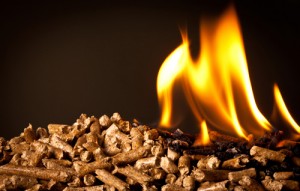Boosting Biomass: New Senate Bill Looks to Improve Outlook
 It’s not a new idea: Burn wood to generate energy. The simplest form is your fireplace, but companies are now tackling this concept at scale to produce what’s known as biomass energy. Hoping to take its place alongside solar, geothermal, and wind as the next big renewable, biomass enjoys it share of champions and critics, but according to Renewable Energy Magazine, the United States is looking to encourage biomass generation with the introduction of a new grant program from the Department of Energy (DOE), which legislators hope will both create jobs and boost innovation.
It’s not a new idea: Burn wood to generate energy. The simplest form is your fireplace, but companies are now tackling this concept at scale to produce what’s known as biomass energy. Hoping to take its place alongside solar, geothermal, and wind as the next big renewable, biomass enjoys it share of champions and critics, but according to Renewable Energy Magazine, the United States is looking to encourage biomass generation with the introduction of a new grant program from the Department of Energy (DOE), which legislators hope will both create jobs and boost innovation.
The Trouble With Trees
According to EurActiv, biomass energy will play a “critical role” in the future of European power generation, especially as more and more European states look for ways to slash both carbon emissions and the overall cost of energy production. In the United States, meanwhile, proponents of biomass say that using scrap wood from lumber yards and “the small tress that overcrowd forests” is a safe way to use up “the hazardous fuels” lying around on forest floors. This doesn’t sit well with detractors who see biomass as the first step toward wholesale deforestation as fossil fuels run out and chopping down trees becomes the “easy” alternative when compared with solar or wind power options.
The new US bill, introduced by Senator Ron Wyden of Oregon hopes to change that mentality by offering cost-sharing grants for biomass producers, allowing them to commit more time and resources to the development of efficient and effective burning technologies which capture the largest amount of energy from biomass by increasing the quality of woody fuels along with their transportation and eventual combustion.
Scaling Up
So how does biomass burning work, exactly? It starts the same way as residential fireplaces: Wood is burned to generate heat. In biomass plants that heat is captured as steam which is then used to power a turbine to create electricity. According to ReEnergy, the emissions from burning biomass are now “generally less” than those produced when using fossil fuels but biomass comes with its own unique issue: Ash.
Ideally, this ash can be reused for other processed but no matter its destination it must first be removed from power plant surfaces to ensure that biomass burning is as efficient as possible. It’s here that the DOE grant and state-of-the art cleaning technologies come into play. If biomass can’t stay at the top of the efficiency scale, the result is too much wood needed for too little gain and tough sell for any company that wants to produce, sell or use biomass energy. In other words, while biomass is heralded as “green” energy because forests are renewable, it’s easy to get ahead of the regrowth cycle and turn this into just another race to the finish line where resources are consumed at an unsustainable rate.
The best outlook for biomass? That the US bill passes and companies take advantage of the DOE grant program to develop new and better ways to both burn biomass and clean the resulting ash—with any luck, committed power producers can light a fire under this renewable energy source.
Next Steps:
- Subscribe to our blog to stay informed about the latest HVAC news and insight.
- Stay up to date on facility maintenance tools such as chiller tube cleaners, boiler tube cleaners, hose/pipe cleaners, descaler systems, industrial vacuums, commercial pressure washers, and drain cleaners.


Boosting Biomass: New Senate Bill Looks to Improve Outlook
[…] Source link […]